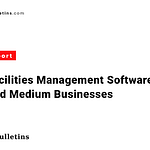Introduction
For large enterprises, managing processes across many departments, geographies, legacy systems, regulatory requirements, and high volumes of data is a major challenge. Business Process Management software for enterprises helps orchestrate, monitor, automate, and optimize end-to-end workflows — from customer service and finance to operations and compliance. The stakes are higher: poor choices cost more, adoption is harder, integrations are trickier, and scalability & governance become critical. This article reviews five leading enterprise BPM platforms, comparing them on usability, features, integration, scalability, pricing & customer feedback, to help enterprises choose the right one.
Methodology
In evaluating enterprise BPM tools we examine each solution using the following criteria:
- Ease of Use — usability of process design, how intuitive for both business users and technical users; how much training is required.
- Core Features — modeling, automation, decision/rules engines, case management, AI/RPA integration, process mining, governance, etc.
- Integration Capabilities — ability to connect with legacy systems, ERPs, databases, cloud services, APIs, event streaming, etc.
- Scalability — support for high transaction volumes, many users, global deployments, multi-tenant or hybrid/on-prem vs cloud architectures, resilience.
- Pricing — whether there are public tiers; how licensing is structured (per user, per process, per usage, subscription vs perpetual), whether trials or proofs of concept are available.
- Customer Feedback — average ratings from review platforms, typical pros and cons, representative user quotes.
Top 5 BPM Software for Enterprises
1. Appian
Overview
Appian is a mature enterprise-grade low-code BPM and automation platform. It is designed for enterprises that need to build, deploy, and manage complex, cross-departmental processes, often with high compliance, data security, AI/RPA components, and integration across many systems. Appian supports both cloud and on-premises / hybrid deployments.
Key Features
- Low-code/visual process modeling + drag-and-drop designers.
- Integration with RPA, AI, business rules, decision logic.
- Real-time process intelligence & analytics; dashboards with monitoring of workflows.
- Data fabric / unified data access, enabling connectivity, handling data from disparate systems.
- Governance, compliance, case management and mobile access.
Benchmark Performance
- Ease of Use: Good — business users can use drag-and-drop; but for highly complex flows or deep integration, technical support is needed.
- Data Integration: Outstanding — supports API, connectors, RPA, cloud/on-prem, data fabric to unify data sources.
- Visualization: Strong — dashboards, process modeling, “in-flight” monitoring, visual analytics.
- Scalability: Outstanding — built to manage very high transaction volumes, enterprise deployments, global scale.
Pricing
- Free Plan: No (enterprise scale; free trials / proofs of concept may be available)
- Starter / Basic: Not typically published; enterprise licenses are custom.
- Professional / Enterprise: Yes — tiered enterprise offerings; usually subscription-based per user / per application / usage model.
- Free Trial: Yes / Proof-of-Concept in many cases for enterprise customers.
Customer Reviews
- Average Rating: ~4.4-4.6 / 5 in many peer review platforms.
- Pros: Very powerful; rich set of tools; mature deployment; strong integration; good analytics; strong governance and security.
- Cons: Higher cost; learning curve especially for large deployments; some customers report slower UI performance in large models; customization for legacy systems can take time.
- User Quote: “We have been able to reduce hand-offs, consolidate silos, and monitor workflows across departments in real-time. But initial deployment required significant effort around integration and training.”
2. Pega Platform (Pega BPM by Pegasystems)
Overview
Pega is another top enterprise BPM and case management platform. It is used heavily in financial services, insurance, healthcare, and government. It is geared towards organizations that need robust decision logic, real-time event handling, RPA, and dynamic case management.
Key Features
- Model-driven architecture and rules engine for decision automation.
- Case management / adaptive case handling (for unpredictable or semi-structured workflows).
- Advanced integrations with legacy systems, real time event processing, APIs, microservices.
- Tools for workflow orchestration, customer journey mapping, UI/UX tools for development.
- Scalability, high availability, deployment flexibility.
Benchmark Performance
- Ease of Use: Moderate — powerful tools, but more technical; business users often need training or involvement of developers/architects.
- Data Integration: Excellent — good support for connectors, legacy system integration, event-driven architectures.
- Visualization: Strong — rich dashboards, ability to model complex flows & cases, decision trees.
- Scalability: Outstanding — designed for high volume, mission critical deployment across many users and regions.
Pricing
- Free Plan: No. Not for full enterprise-capable features.
- Starter / Basic: Not publicly standardized; Pega typically offers custom pricing for large customers.
- Enterprise: Yes — large enterprise licenses, including professional services, support, regulatory compliance etc.
- Free Trial: Sometimes via demo or trial for parts; not always full enterprise features available for trial.
Customer Reviews
- Average Rating: ~4.4 / 5 in many review sources.
- Pros: Very robust; handles highly complex and dynamic workflows; case management; strong decisioning and business rules engine; enterprise scalability.
- Cons: Cost is high; implementation complexity; time to value can be long; UI has some limitations for non-technical users.
- User Quote: “With Pega we can respond dynamically to regulatory changes. But we spent more time than expected customizing connectors and authoring rules.”
3. Signavio (SAP Signavio Suite)
Overview
Signavio, now part of SAP, focuses strongly on process modeling & process intelligence, governance, collaboration, and transformation. For enterprises undergoing digital transformation, wanting strong visibility into processes, process mining, documentation, journey mapping, Signavio is targeted.
Key Features
- BPMN-compliant process modeling, with rich notation, versioning, collaboration hubs.
- Process intelligence / process mining features to discover variants and bottlenecks.
- Central process repository, governance, collaboration features (comments, review, version control).
- Customer journey mapping, value-chain modelling, enterprise architecture diagrams.
Benchmark Performance
- Ease of Use: Good to High — modelling tools are well designed for both technical and business users, though deep features require some learning.
- Data Integration: Moderate to Good — good support for analysis and mining; integration for execution (workflows) sometimes less emphasized.
- Visualization: Outstanding — excels at diagramming, journey maps, visual reports, collaboration.
- Scalability: Good — scales well in large organizations for process modeling and intelligence; workflow execution may require complementary tools.
Pricing
- Free Plan: No full enterprise feature — modeling / view-only or evaluation tiers sometimes available.
- Starter / Basic: Not clearly published for enterprise; usually custom quotes.
- Enterprise: Yes — full suite for large deployments.
- Free Trial: Yes / evaluation access available.
Customer Reviews
- Average Rating: Generally high in modeling and process intelligence; Capterra / SoftwareAdvice reviews show strong user satisfaction.
- Pros: Excellent collaboration and governance; strong tools for process mining and visualization; good for transformation programs.
- Cons: Some users find executing workflows (beyond modeling) less integrated; cost can be high relative to narrower tools; occasional performance lag with very large numbers of processes.
- User Quote: “Signavio has helped us build a shared understanding of our processes across our many business units. But we had to pair it with execution tools for full automation.”
4. Flowable
Overview
Flowable is an open-source / commercial BPM engine more technical, oriented toward enterprises that need flexibility, embedding within existing systems, custom workflows, high throughput, and support for BPMN, DMN, etc. It is often used by organizations wanting to own or host their process engine, possibly on-prem or in hybrid cloud.
Key Features
- Full BPMN 2.0 workflow execution engine; decision logic (DMN).
- Embedded process engines with support for custom extensions; ability for developers to build tailored flows.
- Scalable deployment options: on-premise, cloud, microservices architectures.
- Good support for audit, monitoring, versioning.
Benchmark Performance
- Ease of Use: Moderate — more suited to technical users; less emphasis on non-technical drag-and-drop UI than some full suites.
- Data Integration: Strong — being open source, flexible; integration possible with APIs, custom connectors.
- Visualization: Good — process diagrams, execution status; but user-facing dashboards less polished in some cases.
- Scalability: Excellent — supports high performance, large workloads; many enterprises use it embedded in their systems.
Pricing
- Free Plan: Yes — open source/community edition available.
- Starter / Basic: Commercial licenses for enterprise features/support.
- Enterprise: Yes — enterprise edition with support, SLA, advanced features.
- Free Trial: N/A for community; evaluation for commercial possible.
Customer Reviews
- Average Rating: Favorable among technical and developer communities; less among business-only users because of steeper learning.
- Pros: Highly extensible; good for embedding; solid performance; transparent ownership.
- Cons: Less out-of-the-box UX/business user tools; more investment needed in customization, support.
- User Quote: “We embedded Flowable as part of our backend orchestration layer, and found it extremely reliable under heavy load, but our business teams still demanded a nicer front-end for dashboards.”
5. Oracle BPM / Oracle Fusion BPM Suite
Overview
Oracle’s BPM / Fusion BPM Suite is part of its larger suite of enterprise applications (ERP, HCM, CX etc). Enterprises with existing Oracle investments often prefer Oracle BPM, as it integrates well with other Oracle products, offers maturity, support, broad capabilities, and strong governance.
Key Features
- Full BPM lifecycle: modeling, execution, monitoring, optimization.
Integration with Oracle’s middleware, SOA, databases, plus
support for non-Oracle systems.- Strong security, governance, version control.
- Process performance monitoring, business activity monitoring, policies & rules.
Benchmark Performance
- Ease of Use: Moderate — fairly technical; better for organizations with Oracle technical staff; non-technical users need support.
- Data Integration: Excellent — especially with Oracle’s stack; good connectors, support for standards.
- Visualization: Good to Strong — dashboards, analytic tools, but sometimes less nimble than tools focused solely on modeling or UX.
- Scalability: Outstanding — built to handle large scale, mission critical loads, global deployments.
Pricing
- Free Plan: No. Enterprise licensing only.
- Starter / Basic: Not publicly published; Oracle typically gives custom quotes.
- Enterprise: Yes — full enterprise licenses, maintenance, support.
- Free Trial: Possibly via Oracle’s evaluation programs / POCs but not general free-plan.
Customer Reviews
- Average Rating: Mixed to good; many large customers rate its capability and reliability highly.
- Pros: Deep integration with Oracle stack; mature feature set; robust for large scale and complex regulatory requirements.
- Cons: Higher cost; complexity; steep learning curve; “vendor lock-in” concerns among some customers.
- User Quote: “Oracle BPM solved our compliance and integration challenges, but the upfront architecture and staff training were nontrivial.”
Comparative Analysis Table
| Software | Ease of Use | Data Integration | Visualization | Scalability | Starting Price* |
|---|---|---|---|---|---|
| Appian | Good | Outstanding | Strong | Outstanding | Custom enterprise quote |
| Pega | Moderate | Excellent | Strong | Outstanding | Custom enterprise quote |
| Signavio | Good to High | Moderate to Good | Outstanding | Good | Custom quote for suite |
| Flowable | Moderate | Strong | Good | Excellent | Open source / enterprise quote |
| Oracle BPM | Moderate | Excellent | Good to Strong | Outstanding | Custom enterprise quote |
* “Starting Price” refers to minimum enterprise licensing / cost thresholds; actual cost depends on usage, modules, support, deployment etc.
Recommendations for Enterprises
- Regulated Industries (Finance, Healthcare, Government, Insurance): Prioritize platforms with strong compliance, audit trails, security certifications. Pega and Oracle BPM are excellent choices here.
- Digital Transformation & Process Visibility: If the key need is process transparency, governance, and continuous improvement (rather than full automation immediately), Signavio is excellent.
- Tech-Centric / Embedded BPM Needs: Where you need to embed the BPM engine within a larger system or want open source flexibility, Flowable is strong.
- Rapid Time-to-Value + Low-Code Tools: For enterprises wanting relatively quicker ROI with less dependence on huge IT build, Appian offers a strong balance of usability + power.
- Aligning with Oracle Stack / Legacy Systems: If you already have Oracle infrastructure (databases, middleware), Oracle BPM offers strong synergies.
Enterprises often pair modeling-/analysis-first tools (e.g. Signavio) with execution engines (Appian, Pega, Oracle, or open source) to get both visibility and automation. Pilot one or two candidates, validate with real processes, measure adoption and integration effort, then scale. Remember, total cost of ownership (licensing + customization + training + governance) often exceeds initial sticker price.
Conclusion
For enterprises, the optimal BPM tool needs to deliver more than just workflow automation. It must provide governance, security, integration, process intelligence, scalability, and a path toward digital transformation. If we had to highlight one overall:
- Appian — strong all-around candidate: low-code, powerful, scalable, blending modeling, automation, & AI.
- Pega — best for highly dynamic case management and decisioning under strict governance.
- Signavio — excels for process visibility, mining, mapping, and transformation leadership.
- Flowable — ideal for organizations wanting open architecture and embedding BPM deeply in systems.
- Oracle BPM — best for enterprises invested in Oracle or needing mature, enterprise-grade systems.
Start with a pilot process, evaluate deployment complexity and integration effort, measure user adoption and outcomes, then expand. Clear requirements and governance plans up front reduce surprises during enterprise rollouts.
References
- Vendor product & feature documentation (Appian, Pega, Signavio, Flowable, Oracle)
- Customer reviews on Capterra, PeerSpot, SoftwareAdvice
- Industry reports and BPM / iBPMS analyst reviews














